The Future of Clean Beauty in Southeast Asia
flareAI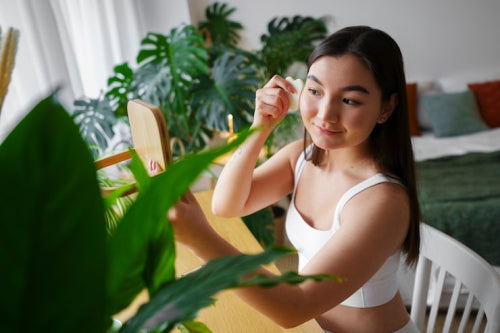
Quick Listen:
In a bustling Singapore beauty boutique, a young woman scans the shelves, her eyes darting between sleek bottles and jars promising radiant skin. She's not just looking for a moisturizer she's hunting for something pure, natural, and kind to the planet. This scene, unfolding daily across Southeast Asia, signals a seismic shift in the beauty industry. Consumers here, from Bangkok to Jakarta, are redefining what they want from their cosmetics, demanding products free of harmful chemicals and wrapped in eco-friendly packaging. At the heart of this movement is a brand like Liht Organics, a Singapore-based pioneer in clean beauty, crafting organic makeup that resonates with this new wave of conscious consumers.
Many women feel trapped by makeup that hides flaws but risks irritation and hidden toxins. This daily choice weighs heavily, dimming confidence over time. Liht Organics invites you to embrace beauty differently. With up to 90% USDA-certified organic ingredients, our vegan, cruelty-free products deliver vibrant color and gentle care, letting you glow with confidence, knowing your skin is nurtured, not compromised. Shop Now!
The Clean Beauty Boom in Southeast Asia
The clean beauty market is no longer a niche trend it's a global juggernaut, and Southeast Asia is emerging as its fastest-growing frontier. According to a report from Future Market Insights, the Southeast Asian clean beauty product market is projected to soar from USD 4.6 billion in 2025 to USD 17.2 billion by 2035, boasting a compound annual growth rate (CAGR) of 14.1%. Skincare dominates this space, claiming a 43.7% market share in 2025, with Thailand leading as the region's fastest-growing market at an 11% CAGR. This surge reflects a deeper cultural shift: consumers, especially younger ones, are prioritizing non-toxic, organic, and cruelty-free products, fueled by growing awareness of synthetic ingredient's potential harms.
Social media amplifies this demand. Influencers in Singapore, Malaysia, and Indonesia flood Instagram and TikTok with tutorials showcasing clean beauty brands, turning small labels into overnight sensations. Yet, it's not just hype. The region's rising middle class, armed with increasing purchasing power, is driving demand for products that align with their values sustainability, transparency, and ethical sourcing. As Bain & Company notes, 15% of Asia-Pacific consumers hesitate to buy sustainable goods due to a lack of information or distrust in claims, highlighting the need for brands to build trust through transparency.
Liht Organics and the Regional Trailblazers
Liht Organics, with its commitment to 100% organic, non-toxic makeup, is well-positioned to ride this wave. Founded in Singapore, the brand emphasizes natural ingredients and eco-conscious packaging, appealing to a region where bottles and jars hold a 35.1% share of clean beauty packaging, per Future Market Insights. But Liht isn't alone. Across Southeast Asia, local brands are carving out space in this competitive market. For instance, Thailand's burgeoning clean beauty scene has seen brands like Siam Botanicals gain traction by blending local herbs with modern formulations, earning consumer trust through rigorous certifications.
International players are also eyeing the region. Global giants, recognizing the Asia-Pacific market's dominance described by Mordor Intelligence as the largest and fastest-growing globally, with a market size expected to hit USD 264.55 billion by 2030 are expanding into Southeast Asia. Liht Organics can learn from these examples, leveraging certifications and partnerships to stand out. A case study from Indonesia shows how a local brand, Wardah, broke through by educating consumers about halal and organic certifications, building loyalty in a skeptical market. Liht could adopt similar strategies, emphasizing transparency to win over eco-conscious shoppers.
Navigating the Challenges
Despite the promise, the clean beauty market in Southeast Asia isn't without hurdles. Regulatory landscapes vary across countries, and securing organic certifications can be a logistical maze. In Malaysia, for instance, stringent guidelines for organic labeling demand extensive documentation, which can strain smaller brands like Liht. Consumer skepticism also poses a challenge. Bain & Company's research reveals that many Asia-Pacific consumers doubt sustainability claims, wary of “greenwashing” from brands that slap eco-friendly labels on products without backing them up. For Liht Organics, proving authenticity through clear ingredient lists and third-party certifications is critical.
Then there's the competition. Global brands with deep pockets can flood the market with products that mimic clean beauty's ethos without the substance, making it harder for authentic players to stand out. Supply chain issues further complicate matters. Sourcing organic ingredients across Southeast Asia's diverse geographies think coconut oil from the Philippines or aloe vera from Thailand requires robust logistics. And affordability remains a sticking point. Balancing premium organic quality with prices that appeal to the region's cost-conscious consumers is a tightrope walk. Yet, these challenges aren't insurmountable. With strategic partnerships and innovative sourcing, brands like Liht can turn obstacles into opportunities.
Seizing Opportunities in a Growing Market
The opportunities in Southeast Asia's clean beauty market are as vibrant as the region itself. The growing middle class, particularly in Thailand and Indonesia, is eager to spend on products that reflect their values. Young, eco-conscious consumers are especially drawn to brands that tell a story ones that highlight sustainable farming or ethical sourcing. Liht Organics could capitalize on this by launching educational campaigns, perhaps through social media, to demystify clean beauty and showcase its benefits. As Bain & Company notes, four out of five environmentally conscious consumers in Asia-Pacific recommend sustainable products they love, with over half becoming “super promoters” who share with more than ten people. This word-of-mouth power is a goldmine for brands that deliver on their promises.
Local partnerships offer another avenue. Collaborating with regional suppliers could streamline costs and ensure a steady flow of organic ingredients, while aligning with cultural preferences like halal certifications in Indonesia or Malaysia could broaden Liht's reach. Innovative marketing, such as virtual try-ons or eco-focused campaigns, could further cement consumer trust. With the global clean beauty market projected to reach USD 21.29 billion by 2030, growing at a 14.8% CAGR according to Grand View Research, Southeast Asia's role as a growth engine is undeniable. For Liht, the moment to act is now.
A Bright Future for Clean Beauty
As Southeast Asia's clean beauty market surges toward a projected USD 17.2 billion by 2035, the region stands at a crossroads. Brands like Liht Organics have a chance to shape the future, but only if they navigate the challenges with agility and authenticity. Experts predict the next decade will see even greater demand for transparency, with consumers seeking brands that not only deliver safe, effective products but also align with their ethical and environmental values. For Liht, this means doubling down on education showing consumers why organic matters and embracing local nuances, from Thailand's love for herbal-infused skincare to Singapore's tech-savvy beauty shoppers.
The path forward isn't easy, but it's exhilarating. Clean beauty brands must innovate relentlessly, blending science with sustainability to meet the region's evolving demands. For consumers browsing those boutique shelves, the choice is clear: they want products that feel good, do good, and look good. For Liht Organics and its peers, the challenge is to deliver on that promise, transforming Southeast Asia's beauty landscape one organic lipstick at a time.
Frequently Asked Questions
What is driving the clean beauty market growth in Southeast Asia?
The Southeast Asian clean beauty market is projected to grow from USD 4.6 billion in 2025 to USD 17.2 billion by 2035, driven by a rising middle class and increasing consumer awareness of synthetic ingredient's potential harms. Young, eco-conscious consumers are demanding non-toxic, organic, and cruelty-free products, with social media influencers amplifying this trend across platforms like Instagram and TikTok. The market is fueled by consumers who prioritize sustainability, transparency, and ethical sourcing in their beauty purchases.
What are the main challenges facing clean beauty brands in Southeast Asia?
Clean beauty brands in Southeast Asia face several key challenges including varying regulatory landscapes across countries and complex organic certification processes. Consumer skepticism about "greenwashing" claims is significant, with Bain & Company research showing that 15% of Asia-Pacific consumers hesitate to buy sustainable goods due to lack of information or distrust. Additionally, brands must navigate supply chain complexities when sourcing organic ingredients across diverse geographies and balance premium organic quality with affordable pricing for cost-conscious consumers.
Which countries are leading the clean beauty trend in Southeast Asia?
Thailand is emerging as the fastest-growing clean beauty market in Southeast Asia with an 11% compound annual growth rate (CAGR), followed by strong growth in Singapore, Malaysia, and Indonesia. Skincare products dominate the regional market with a 43.7% market share in 2025, while bottles and jars hold 35.1% of clean beauty packaging preferences. Local brands like Thailand's Siam Botanicals and Indonesia's Wardah are successfully competing alongside international players by emphasizing certifications and consumer education about organic and halal standards.
Disclaimer: The above helpful resources content contains personal opinions and experiences. The information provided is for general knowledge and does not constitute professional advice.
You may also be interested in: The Hidden Dangers of Carmine in Makeup Colorants: Embracing
Many women feel trapped by makeup that hides flaws but risks irritation and hidden toxins. This daily choice weighs heavily, dimming confidence over time. Liht Organics invites you to embrace beauty differently. With up to 90% USDA-certified organic ingredients, our vegan, cruelty-free products deliver vibrant color and gentle care, letting you glow with confidence, knowing your skin is nurtured, not compromised. Shop Now!
Powered by flareAI.co
Share
You May Also Like
-

Discovering Self-Love Through Clean Beauty: A Guide to Nurturing Your Inner and Outer Self
In the journey of self-love, every action, thought, and choice we make towards ourselves can be a powerful affirmatio...
-

The Science Behind Organic Makeup and Pregnancy: A Gentle Choice for Moms-to-Be
wp:paragraph Pregnancy is a wonderful and exciting journey that comes with added responsibilities of ensuring the ...
-
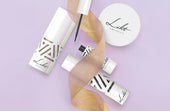
Liht Organics Black Friday: Enhance Your Beauty Routine with Vegan, Organic, and Natural Essentials!
As the holiday season approaches, there’s a sparkle in the air, and we at Liht Organics are thrilled to add a touch o...
-

Organic Makeup That Heals As It Conceals
Liht Organics Empowers Women With Only The Best For Their Beauty NeedsLiht Organics combines the best of both worlds:...
-
![[FEATURE] Liht Organics to debut at TFWA Asia Pacific show](//lihtorganics.com/cdn/shop/articles/1_1.png?v=1759328400&width=170)
[FEATURE] Liht Organics to debut at TFWA Asia Pacific show
‘Organic makeup that’s safe enough to eat’ — Liht Organics to debut at TFWA Asia Pacific show by Hannah Tan | 24 Apri...
-
![[FEATURE] The Singapore-based organic makeup brand is a first-time exhibitor at this year’s TFWA Asia Pacific Exhibition in Singapore in May 2025](//lihtorganics.com/cdn/shop/articles/2_1.png?v=1759328386&width=170)
[FEATURE] The Singapore-based organic makeup brand is a first-time exhibitor at this year’s TFWA Asia Pacific Exhibition in Singapore in May 2025
TFWA Asia Pacific preview: Liht Organics targets expansion in travel retail By DFNI Staff Writer The Singapore-bas...
-
![[FEATURE] Travel Retail Awards 2025 finalists - Best Make-up Product Color-Intense Liquid Lipstick – Liht Organics](//lihtorganics.com/cdn/shop/articles/4_e2f54f0f-fcd1-46e7-9990-fc9d29e35131.png?v=1759328382&width=170)
[FEATURE] Travel Retail Awards 2025 finalists - Best Make-up Product Color-Intense Liquid Lipstick – Liht Organics
Revealed: Travel Retail Awards 2025 finalists By Trbusiness Editor | Wednesday, 23 July 2025 15:21 TRBusiness is th...
-
![[FEATURE] Liht Organics targets expansion in travel retail](//lihtorganics.com/cdn/shop/articles/3_1.png?v=1759328346&width=170)
[FEATURE] Liht Organics targets expansion in travel retail
Organic makeup that’s safe enough to eat: Liht Organics targets expansion in travel retail By Laura Shirk Liht Organ...
-

[FEATURE] Gulf News: TikTok’s strawberry girl makeup trend: How to achieve that rosy glow inspired by Hailey Bieber
Berry, berry, strawberry, love strawberry, like BTS’s J-Hope, the band’s strawberry enthusiast once said. If only we ...
-

[FEATURE] Gulf Business Magazine : Liht-ing it up
Our founder, Nerissa Low was interviewed by Gulf Business, where she discussed her experience launching Liht, an orga...
-

[FEATURE] Daily Vanity: 11 local beauty brands owned by women – you’d be surprised how many of them started in their kitchens!
When we give a shout-out to homegrown beauty businesses, we aren’t just doing it for the sake of supporting local. Th...
-

[FEATURE] Entrepreneur ME : UAE-Based Liht Organics' Nerissa Low On Crafting An Organic Makeup Brand For The Skin-Conscious Consumer
As is the case with the origin stories of so many startups out there, Liht Organics came into being after its founder...
-
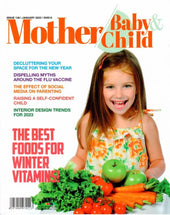
Mother, Baby & Child Editor’s Pick: Liht Organics Lights the Way
Excited to be the Mother, Baby & Child’s ‘Editors pick’ for their choice of Beauty brand.The article outlined the...
-
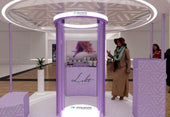
[FEATURE] EmiratesWoman - 8 Fabulous things to do in Dubai this weekend
by SARAH JOSEPHJANUARY 20, 2023Try the UAE’s first virtual reality makeup podium The popular VR-backed makeup exper...
-

Nerissa Low of Liht Organics On The Self-Care Routines & Practices Of Busy Entrepreneurs and Business Leaders
By Maria Angelova, CEO of Rebellious Intl.Date: 4 January, 2023Nerissa Low of Liht Organics On The Self-Care Routines...
-

Liht Organics: Meet the beauty brand that has caught the eye of the Royal Family of Bahrain
By Crystal Lee Digital Editor28 May 2021The world of clean beauty is, ironically, rather murky.That’s because the ter...
-

The latest luxury makeup and skincare drops, including serums, concealers, moisturisers and more
Allisa Noraini21 May, 2021It’s fine to splurge in the name of beauty. This new range of makeup and skincare drops are...
-

These SG Beauty Bosses Are Conquering The World Despite The Pandemic
First Singapore, then the US, China, Germany, Dubai, UK, South Korea, Malaysia, Hong Kong, Thailand, Australia… By...
-

Nerissa Low, Founder at Liht Organics
Written by Callum LaingPosted on December 26, 2020 10 min readNerissa Created Organic Makeup That Actually Improve...
-

Liht Organics – Makeup That Makes You
At Liht Organics, our mission is simple – to provide women (and men) with a safe experience when it comes to beauty s...
-

Why Should We Use Organic Makeup?
We cannot deny that cosmetics is one of our beauty essential item – it enhances our looks and conceals our flaws. Man...
-

Organic makeup and why your skin will love it: Liht Organics founder
By Jolene,July 27, 2020 |7 mins readOrganic make up in Singapore is a trend that is fast-catching on here as we becom...
-

[FEATURE] DC EDIT – Makeup & Confidence: Talking Self-love With Liht Organics’ Founder Nerissa Low
Makeup and confidence — the long, drawn-out fight that many of us have grappled with personally. I’m sure I’m not the...
-

[FEATURE] THE FEMALE CULTURE – I TRIED LIHT ORGANICS AND THIS IS HOW IT WENT
I’m a huge fan of makeup and I love testing out new products so I was pretty excited to get my hands on Liht Organics...
-

[FEATURE] SINGAPORE MOTHERHOOD – The Best Organic and Natural Skincare and Makeup for Pregnant and Breastfeeding Mums in Singapore
Pregnancy is a hormone-volatile period for women. One place where this makes itself seen and felt is on the skin. Som...
-

[FEATURE] AFTER CLINIC HOURS – 21 Back to Beauty Deals in Singapore (2020)
With spas and salons shuttered island wide for two months, I never thought I’d be this desperate for a good old’ Swed...
-

[FEATURE] KUL AL USRA MAGAZINE JUNE 2020
Choosing Pinks & Oranges this summer!Featured: Moisture Burst Lip Glaze in Pink Cupcake.
-
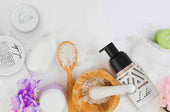
[FEATURE] Award-winning Organic Makeup Brand Liht Organics Gives Back to the Community & Environment During COVID-19
Singapore’s First Organic Makeup Brand with 100% Natural Makeup That Is Safe Enough to Eat Liht Organics promises org...
-

[FEATURE] COSMETICS DESIGN ASIA – COVID-19 ‘WAKE-UP CALL’: SINGAPORE’S LIHT ORGANICS SEES GLOBAL POTENTIAL AMID CLEAN BEAUTY CLAMOUR
Original article at: https://www.cosmeticsdesign-asia.com/Article/2020/06/26/Singapore-s-Liht-Organics-sees-globa...
-

[FEATURE] THE LIFESTYLE COLLECTIVE – BEAUTY SHOULD NEVER BE CRUEL
Date: June 24, 2020Author: Kristen Chen Liht (pronounced as light) Organics is a Singaporean organic makeup brand t...
-

[FEATURE] NÜYOU – 7 ONLINE PLATFORMS TO SHOP FOR CLEAN BEAUTY PRODUCTS
纯净美容(Clean Beauty)的美肤概念,再近几年来越来越受欢迎。随着消费者“爱自己”的美容意识逐步提升,对于用在脸上的所有物品、成分更为关注和讲究。以广义来讲,纯净美容主张使用“干净”成分和无毒配方,让肌肤的可能性损伤减到最小...
-

[FEATURE] COSMOPOLITAN MIDDLE EAST – 3 BENEFITS OF SWITCHING TO ORGANIC BEAUTY PRODUCTS THIS RAMADAN
By Cosmo – May 08, 2020Nerissa Low, founder of Liht Organics, shares the ultimate benefits of going organic this mont...
-

Nerissa Low of Liht Organics: “Seeing Light at the End of the Tunnel; 5 Reasons To Be Hopeful During this Corona Crisis”
Ely Weinschneider, Psy.D.May 8 · 9 min read …It shows us that everyone- whether we are rich or poor, regardless...
-

[FEATURE] AL MARA MAGAZINE APRIL 2020
-

[FEATURE] RetailME April 2020 – Liht Organics Stays Firm On Strengthening GCC Presence
-

[FEATURE] EMARAT AL YOUM NEWSPAPER – 27 MARCH 2020
English Translation:In spring and summer days, women love to have very light makeup in terms of color and texture, ...
-

[ARTICLE] WKND Magazine March 2020 – Know Your Organic Makeup
-

[FEATURE] AVIAMOST DUBAI – March/April 2020
English Translation:Lipstick with organic flowers. Thanks to the rich complex of natural ingredients, the lipstick...
-

[FEATURE] RUSSIAN EMIRATES (MAR/APR ISSUE)
Russian Emirates is a luxury lifestyle and fashion magazine covering information about the UAE, fashion, beauty, j...
-

[FEATURE] – KUL AL USRA MAGAZINE MARCH 2020
GET THE LOOK!
-

[FEATURE] IMAGES Retail ME – Liht Organics Announces GCC-Wide Expansion
Rupkatha Bhowmick Mar 10, 2020 The plan is to reach 75 Liht Organics retail touchpoints by June-July 2020 and touch...
-

[FEATURE] BABY & CHILD SPRING 2020 – NATURAL BEAUTIES
-

[FEATURE] AWQAT DUBAI – Liht Organics: The First Premium Organic Makeup Brand
ENGLISH TRANSLATION:Liht Organics – The First Premium Organic Makeup Brand Liht Organics, a premium organic beauty ...
-

[FEATURE] FRIDAY MAGAZINE – THE RETRO EYELINER LOOK
-

[FEATURE] MOTHER BABY & CHILD – VANITY ESSENTIALS – THE BEAUTY EDIT
-

[FEATURE] Masala! Magazine February/March 2020 Issue – Beauty Debut: Liht Organics
-

[Feature] – TimeOut Singapore – The Best Local Beauty and Skincare Brands In Singapore
For full article, click here.
-

[FEATURE] KUL AL USRA MAGAZINE – LIHT UP YOUR WORLD WITH LIHT ORGANICS
[ENGLISH TRANSLATION]Liht Up Your World With Liht OrganicsThe First Premium Organic Makeup Brand To Debut In The Mi...
-

[FEATURE] SINGAPORE TATLER – 9 Local Beauty Brands You Should Know Of
-

[FEATURE] nüyou August 2019 Issue – 15 Faces To Watch
-

[FEATURE] HONEYCOMBERS – Local Beauty Gurus: Singapore Beauty Brands You Need To Know About
-

[FEATURE] The Wellness Insider – Seeing The Liht With Founder Nerissa Low
-

[FEATURE] 联合早报 (LianHeZaoBao) – Women Entrepreneur Awards 2019 Coverage
-

[FEATURE] THE STRAITS TIMES Life – Clean beauty with a Singapore heart
-

Romantic Organic Makeup Looks for Valentine's Day: Tips, Tricks, and Product Picks
Valentine's Day is the perfect occasion to embrace the beauty of organic makeup. At Liht Organics, we believe in the ...
-
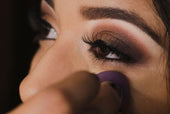
Enhance Your Eyes: A Guide to Eyeliner for Every Eye Shape with Liht Organics
Welcome to the Liht Organics blog, where we believe in celebrating the natural beauty of every eye shape. Today, we'r...
-
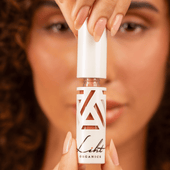
How to do makeup with only lipstick?
At Liht Organics, we believe in the power of clean beauty and the artistry of makeup. Makeup is more than just enhanc...
-

How to Clean Your Makeup Brushes in 6 Simple Steps
Cleaning your makeup brushes may seem like a tedious task, but it's an essential part of your beauty routine. Not onl...
-

Makeup Tips to Help You Look Your Most Flattering on Virtual Meetings!
After more than 2 years of work-from-home arrangement, and possibly hundreds of zoom calls and Google meet virtual me...
-
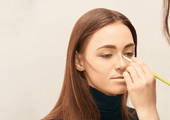
Learn How to Contour with This Simple Guide for Beginners
Want to take your makeup to the next level? Try contouring to achieve a more defined or sculpted look à la the Kardas...
-
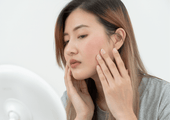
Essential and Easy Makeup Tips for Sensitive Skin
Living with sensitive skin conditions like eczema, psoriasis, and more is already not an easy feat. Throw in makeup t...
-
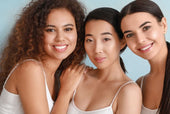
Raising Your Vibration: A Liht Organics Guide for Empowerment This International Women's Day
wp:paragraph As International Women's Day (IWD) approaches, it serves as a powerful reminder of the journey towards s...
-

The Beauty of Going Bare: Why Sleeping with Makeup is a No-No
Have you ever had one of those nights where you're too tired to clean off your makeup? You might believe, "Skipping...
-

Breast Cancer Awareness: Empower Your Beauty with Liht Organics Makeup
During October, we observe Breast Cancer Awareness Month as a way to unite and bring attention to breast cancer whil...
-

The Hidden Dangers of Carmine in Makeup Colorants: Embracing Healthier and Vegan Options
Makeup has become an integral part of our daily routines, allowing us to express our unique beauty. However, as we pr...
-

How can I ensure that my makeup products are organic and won't harm my skin?
When it comes to makeup, it’s important to be mindful of what you’re putting on your skin. With so many products on t...
-
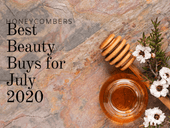
[FEATURE] HONEYCOMBERS – BEST BEAUTY BUYS IN JULY
by Nicole NithiyahWhat’s hot in our beauty hit list: Honest thoughts and top beauty stories we’re swooning over. As w...
-

Liht Organics Introduces Exclusive Gift Sets: Enhance Your Beauty This Festive Season!
As the holiday season approaches and the year draws to a close, Liht Organics is thrilled to present two enchanting g...
-

Get Spooktacular with the Best Halloween Makeup Ideas using Liht Organics' All-Natural, Vegan, and Cruelty-Free Cosmetics!
With Halloween just around the corner, it’s time to let your creativity shine and transform yourself into a spooky,...
-

Celebrating World Animal Day with Liht Organics: Embracing Natural Cruelty-Free Makeup
wp:paragraph As we observe World Animal Day, the team at Liht Organics takes great pride in honoring our pledge to...
-
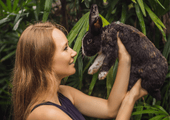
Reasons Why You Should Choose Cruelty-Free Cosmetics Instead!
With increasing exposés unveiling the ugly truth behind animal testing that goes on in the beauty industry, it is lit...
-

Celebrate Singles Day with Makeup That Empowers – 22% Off at LIHT Organics!
This Singles Day, treat yourself to beauty that goes beyond skin-deep. At LIHT Organics, we believe makeup is about s...
-

Preparing for the Cozy Beauty of Autumn: A Preview of Your Fall Look
As we bid farewell to the warm, sun-kissed days of summer, it’s never too early to start dreaming about the enchantin...
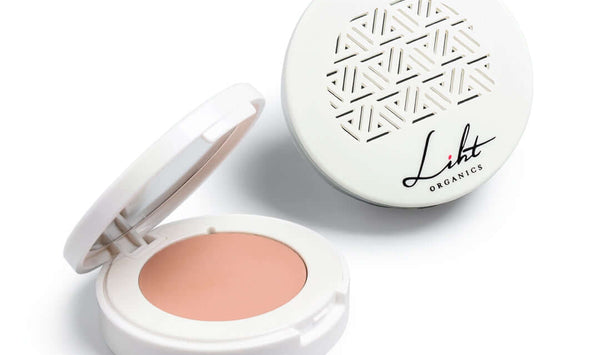
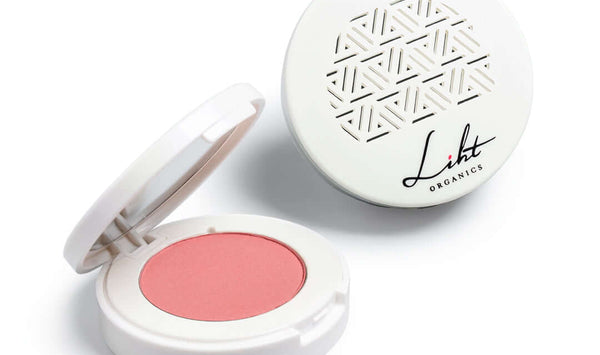
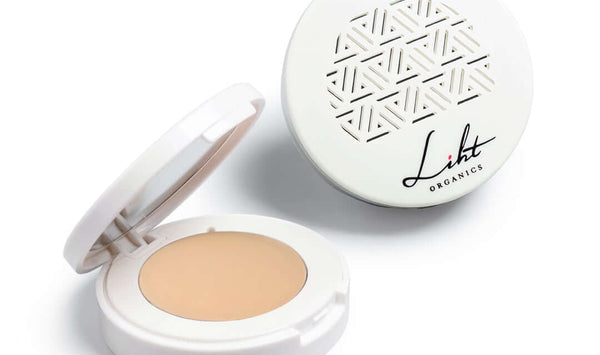
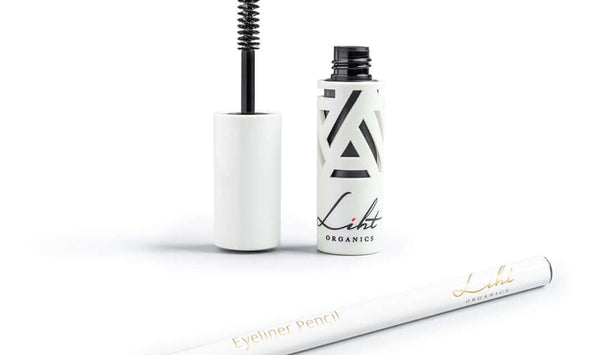
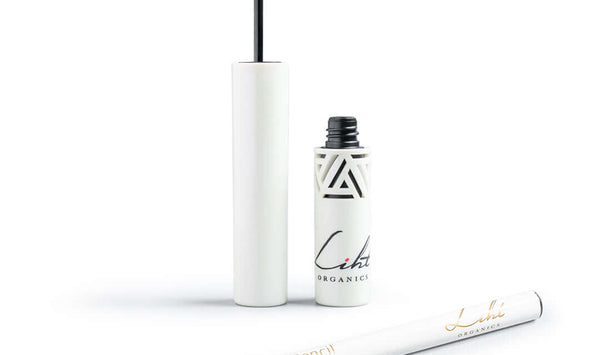
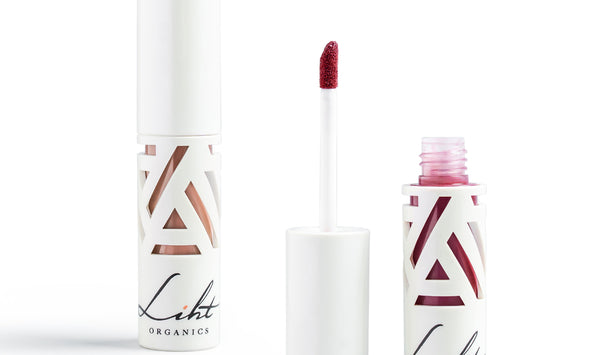
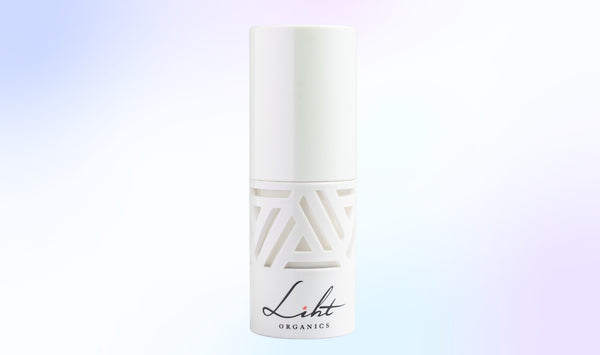

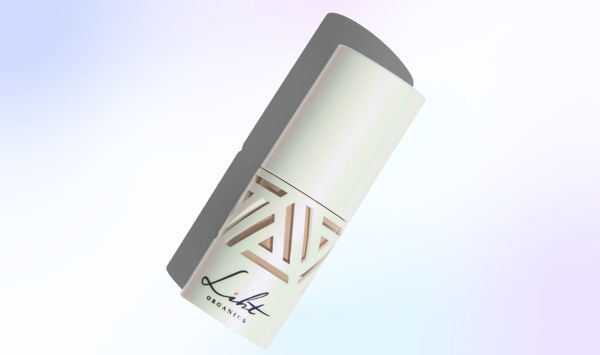
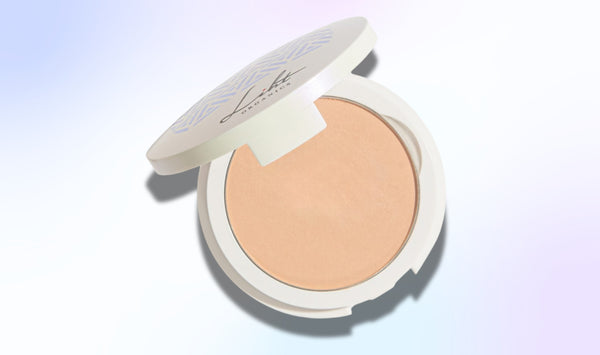
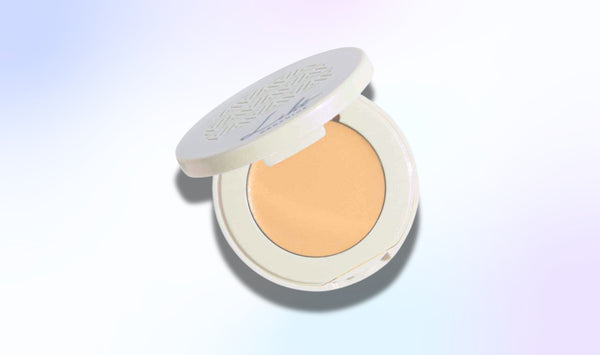
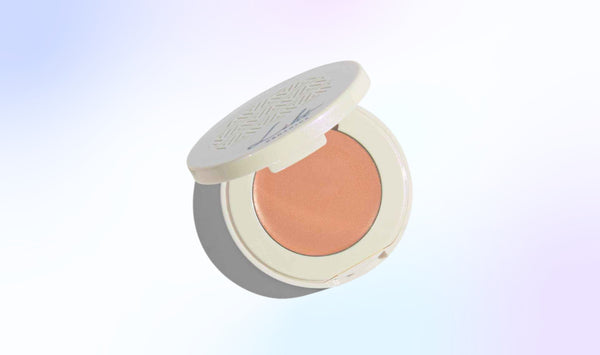
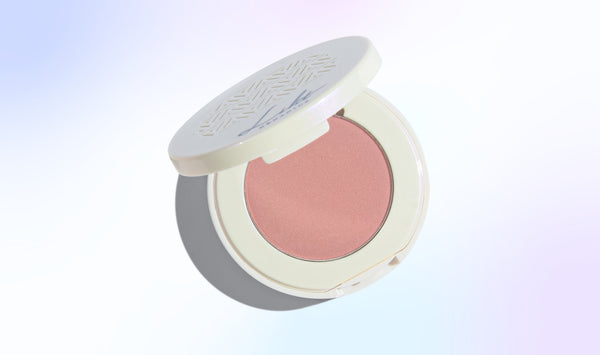
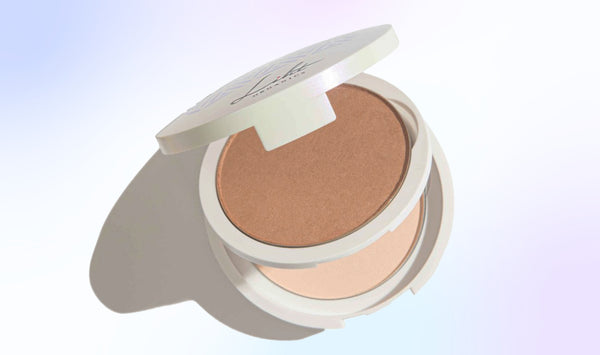
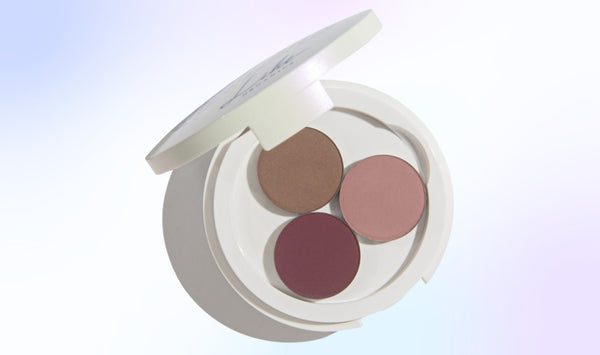
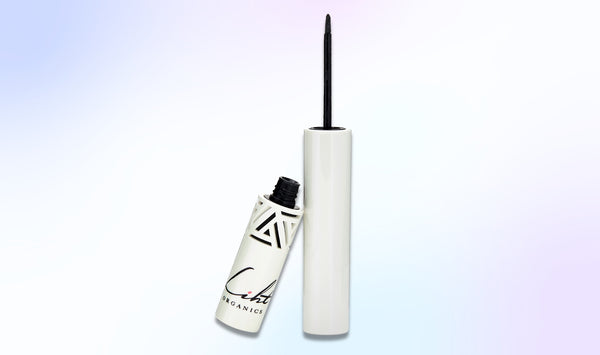
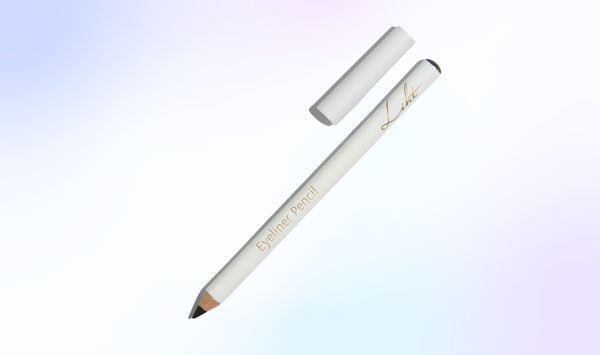
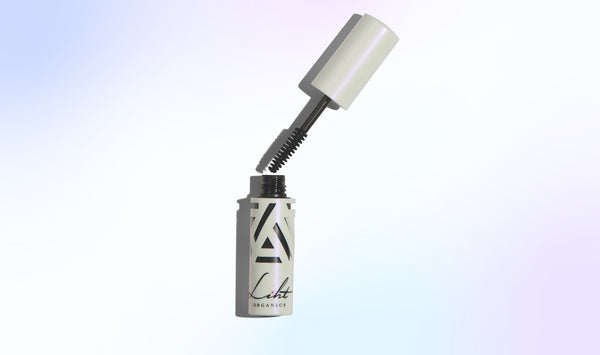
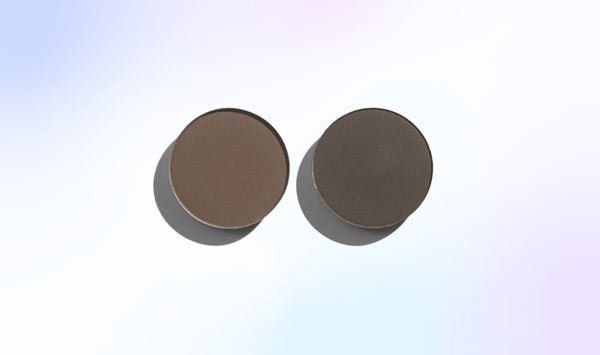
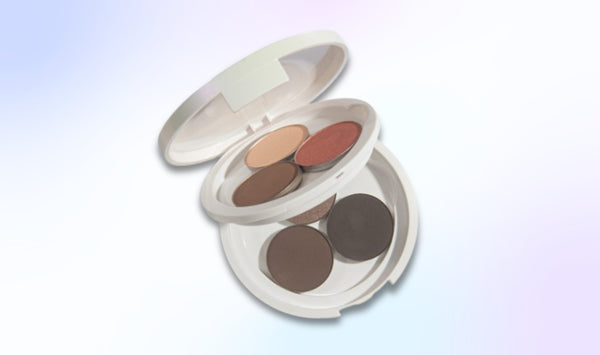
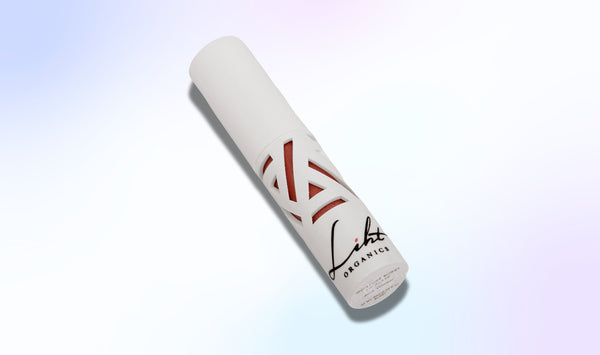
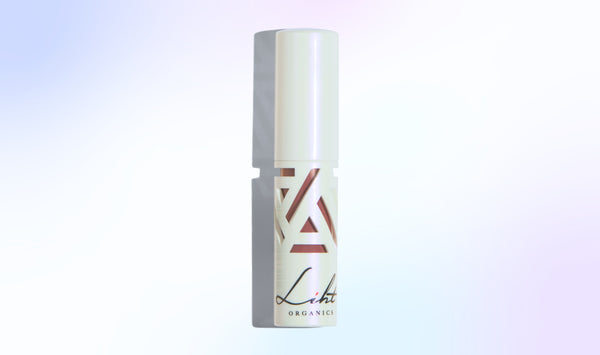
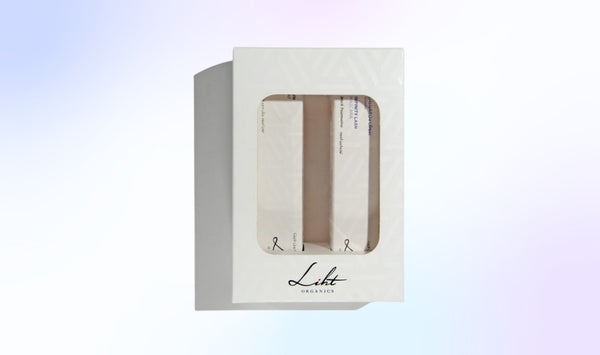
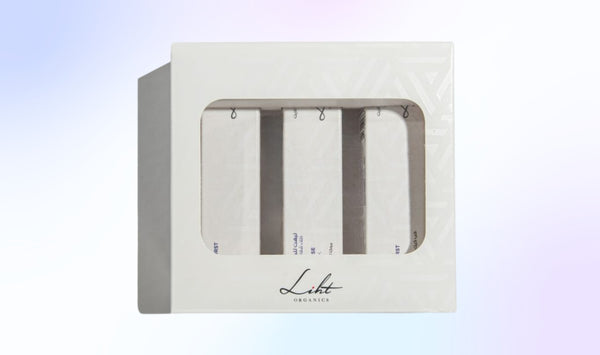


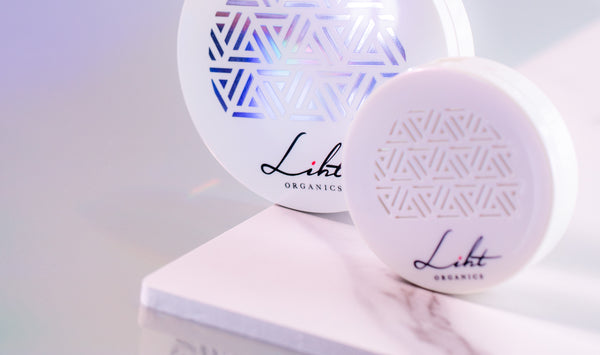
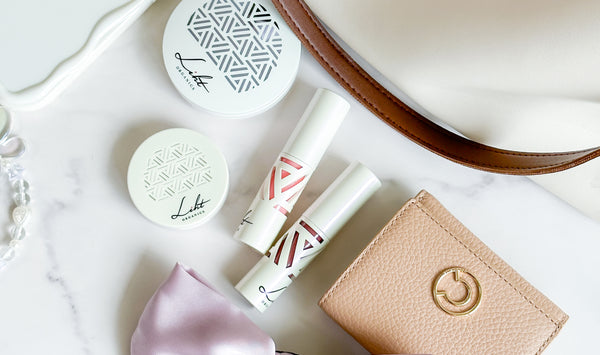
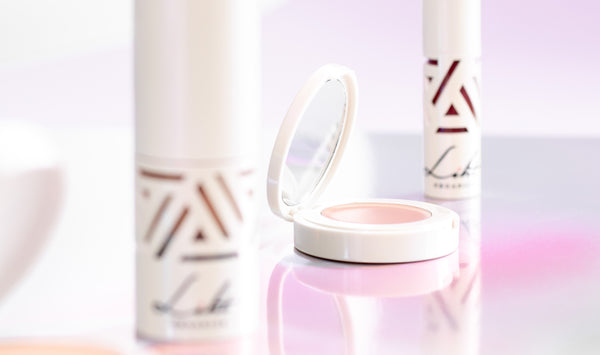




![[FEATURE] Liht Organics to debut at TFWA Asia Pacific show](http://lihtorganics.com/cdn/shop/articles/1_1.png?v=1759328400&width=170)
![[FEATURE] The Singapore-based organic makeup brand is a first-time exhibitor at this year’s TFWA Asia Pacific Exhibition in Singapore in May 2025](http://lihtorganics.com/cdn/shop/articles/2_1.png?v=1759328386&width=170)
![[FEATURE] Travel Retail Awards 2025 finalists - Best Make-up Product Color-Intense Liquid Lipstick – Liht Organics](http://lihtorganics.com/cdn/shop/articles/4_e2f54f0f-fcd1-46e7-9990-fc9d29e35131.png?v=1759328382&width=170)
![[FEATURE] Liht Organics targets expansion in travel retail](http://lihtorganics.com/cdn/shop/articles/3_1.png?v=1759328346&width=170)
































































